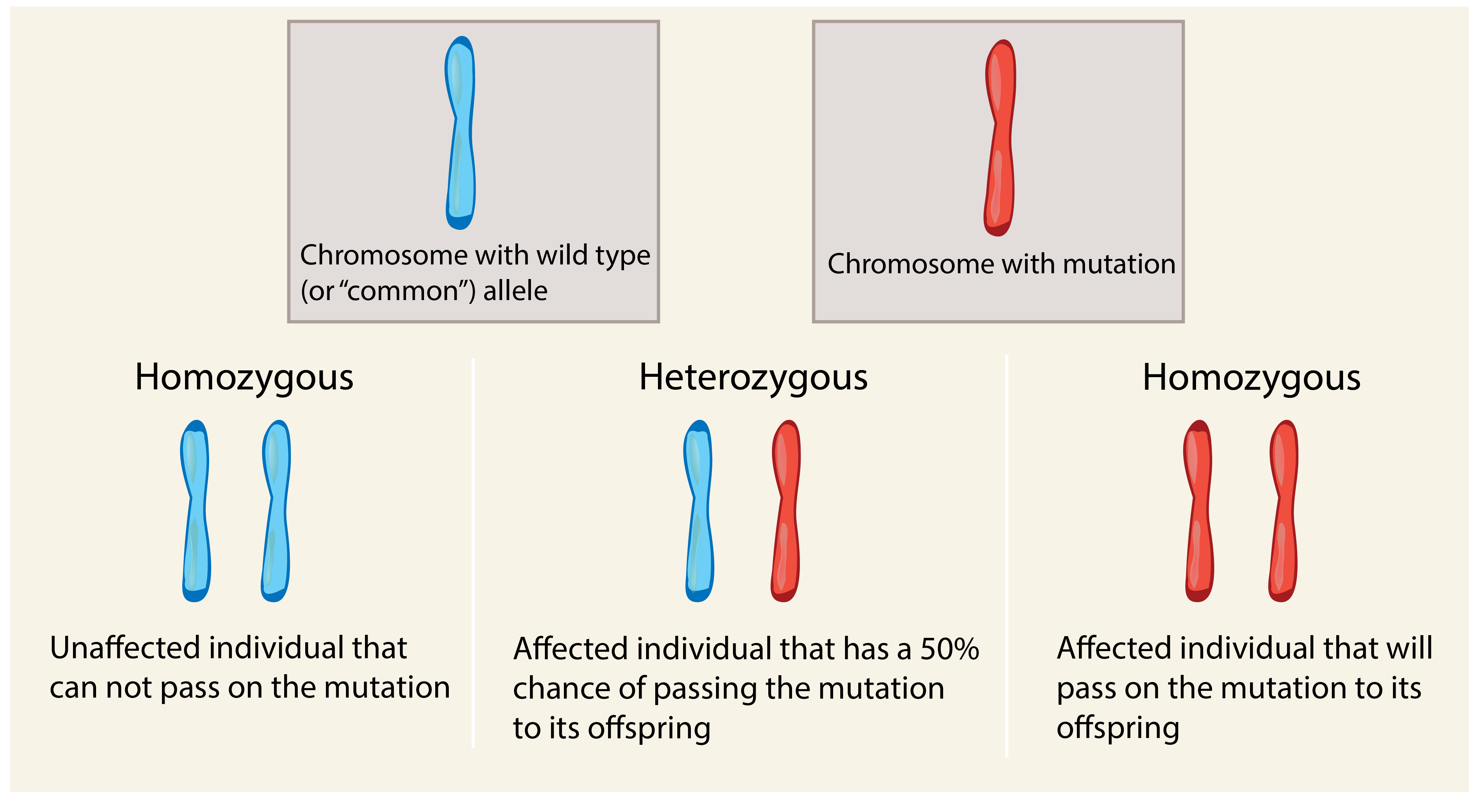6.9 Recessive traits are expressed when two copies are present

For many genes in your body, it doesn’t really matter if one copy, on one of the homologues, has a mutation that reduces the function of the gene product or protein. Typically, the healthy copy can prompt the production of enough functioning protein to ensure normal development. In these cases, there won’t be noticeable changes to an individual’s phenotype unless the individual inherits two copies of the mutation. In other words, both alleles at a single locus code for proteins with reduced, altered, or no function. These conditions, which are only expressed when two alleles are inherited, are recessive.
A carrier is an individual who has a single copy of a recessive allele. In the case of a recessive trait, having only one mutated copy will not cause the individual to display the phenotype. These recessive inheritance patterns allow for an individual to carry potentially problematic mutations without suffering any of the consequences. Although carriers will not display the trait, they can pass the mutation on to children. If two healthy carriers both pass on a recessive trait, the phenotype will present in the individual offspring. One such example is Tay-Sachs disease , a disorder that is caused by recessive mutations in the HEXA gene, located on chromosome 15. Children with Tay-Sachs disease live for a very short period of time. However, this mutated HEXA gene still is able to persist in populations since carriers can be completely healthy, and grow up to reproduce.
Check Yourself
Content on this page was originally published in The Evolution and Biology of Sex by Sehoya Cotner & Deena Wassenberg and is reproduced here in compliance with the original CC-BY-NC 4.0 license.

